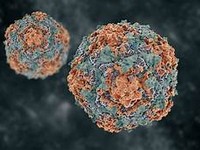
IRON OVERLOAD
FOODS THAT HARM
FOODS TO LIMIT
WHO’S AFFECTED
Hemachromatosis is the most common form of iron overload disease and can be inherited or caused by anemia or alcoholism
Left untreated, it can cause irreversible damage to the body
Hemachromatosis causes the body to absorb and store excess iron
The body stores the excess in muscles and vital organs, specifically the liver, heart, and pancreas
An iron overload does not produce symptoms until a harmful amount has accumulated in the body
The symptoms and signs often surface in middle age, and they include a ruddy complexion, fatigue, joint and intestinal pain, and an irregular heartbeat
As the liver becomes damaged, jaundice may develop
Unless treated, the damage can lead to serious conditions such as cancer, heart disease, and liver disease
Nutrition Connection
The main focus in dealing with hemachromatosis should be avoiding excess iron intake and foods that increase iron absorptionAvoid eating foods high in vitamin C with iron-rich plant foods
For those who are predisposed to store extra iron, this combination may be harmful
Consume the vitamin C items between meals
Be careful with multivitamins and supplements
Unless prescribed by a doctor, supplements containing iron and large doses of vitamin C should not be taken
Some experts advise that anyone who is contemplating taking a vitamin C supplement should first have a blood test to measure iron levels
Avoid alcohol
Alcohol may cause liver damage
Avoid raw shellfish
Those with hereditary hemachromatosis are prone to infections, particularly ones caused by bacteria in raw shellfish
Beyond the Diet
If anyone in your family has hemochromatosis, it’s important to get screened by a physician who can help you manage the disease before it inflicts any damage to your organsMake note of the following steps: Receive an in-depth diagnosis
Your doctor may run blood tests to diagnose an iron overload
In some cases, a test for a gene mutation or a liver biopsy may be necessary
Look at blood removal
This safe and effective treatment, which is just like donating blood, involves periodic removal of 1 pt (0
5 L) or so of blood, which reduces iron levels by forcing the body to use some of its stores to make new red blood cells
10 years or more of taking iron supplements or having blood transfusions may lead people to suffer iron overload
Special Feature
INTERACTION WARNING:When Food and Medicine Don’t Mix
In our body, drugs share the same route of absorption and metabolism as nutrients, which creates the potential for interactions
Foods can affect drug action in many ways
The most common interaction is when foods interfere with absorption, which can make a drug less effective
Nutrients or other components of food can also interfere with a drug’s metabolism, or how it is broken down in the body, and vice versa
FOOD-DRUG INTERACTIONS
Here are some of the most common prescription and over-the-counter medications that may interact with everyday foodsTalk with your doctor if you have any concerns about medications that you’re taking
Importance of well balance diet




